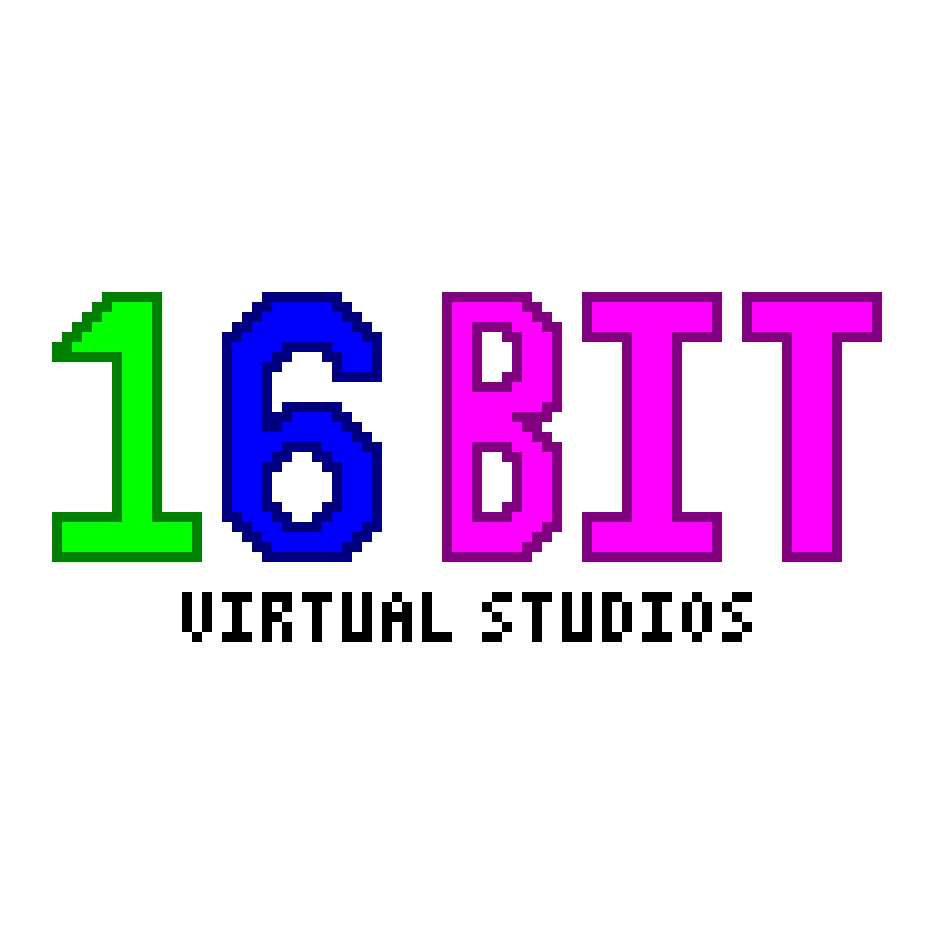Finally migrated from Windows to Linux. For anyone wondering, what is the state of Linux as your primary OS for home PC\laptop in 2023.
I’ve finalised my Archlinux installation yesterday, I dropped of Linux more than 10 years ago and experience in 2023 in comparison is awesome and beyond even wildest dreams back then:
- For average user looking for more out of the box experience I would suggest something Arch based (people in comments suggest EndeavourOS, please do your research). Archlinux installation took me quite some time
- Almost everything works out of the box, by just installing corresponding package
- KDE Plasma environment is fast and beautiful
- Pipewire audio server (Jack\Pulseaudio replacement) works great
- Wayland window server is not there yet, especially if you have Nvidia with proprietary drivers and want to use VR. Waking up, session restoration and other scenarios have issues. Use X11.
- Wine is great!
- Music making - Bitwig Studio DAW has linux native version, yabridge allow you to use windows VSTs, which are easily installed via wine
- Gaming works out of the box with Steam for majority of titles, some games have native linux version. Performance is great. In worst case windows game might loose 5-15% in performance. Was not case for my titles
- Gaming outside steam is fine too. Use Wine, Lutris, Proton
- VR is a mixed bag. Not everything is there (Desktop view, sound control and mirroring, camera, motions smooth, lighthouses do not wake up os go to sleep. I use my phone to turn them on/off). But if its not the problem for you, quite some titles work. Tried: native HF Alyx, Lab, windows: Beat Saber and Boneworks. For me it’s a surprise, I did not count on it. Performance is great.
So overall my experience is great. Eventually I’m going to get rid of WIndows on other computers and laptops at howe. I can finally wave goodbye to Windows, with lots of ads and bloatware. Alway glad to help with answers regarding installation while my memory and history logs are fresh. ^^
I wouldn’t recommend Arch to Linux beginners, though. It’ll take quite a bit of tinkering to get to work and you have to develop a pretty detailed understanding of the whole thing. Which is absolutely fine, of course, if this is what you want to do. But if you just want something that works with minimal hassle, try Mint.
Yes, I find this obsession with Arch on Lemmy very weird. It’s certainly not a distro for beginners. Ubuntu (let the hate flow), Mint, Fedora, and many others would be better choices.
If it is what you like, fair enough but I feel that it is encouraged around here as a default for both beginners and advanced users, which is bizarre. It’s too complex for beginners and not optimisable enough for very advanced users. I don’t hate it but I hate to see it become the standard.
From my personal experience Arch is several months ahead of other distros and depending on the package and sometimes has everything you need already included for gaming.
I believe this is due to the Steam Deck.
However for ease of use, I agree there are other better distros. Fedora is only 2ish months behind arch in terms of graphics drivers and Ubuntu… has the latest proton from steam and lutris since proton isn’t installed from the local app stores.
Arch is several months ahead of other distros
Source for that? It’s one of those weird, wild affirmations that go around regarding Arch. Ahead in terms of what? Integrating the most up-to-date kernel or something?
Is it because of the rolling release model? But it’s not the only one to have rolling releases.
This comes from personal testing of games. There was a DX11 bug intel igpus where UE4 games crash instantly on boot. I was able to work around this by forcing dx12 in arch, but when I moved to fedora it wasn’t working, that was until about 2 months later after an update. Since I don’t know exactly how far behind fedora is in terms of graphics drivers I said it in ambiguous terms.
Yeah, I’m not sure supporting MS proprietary 3D rendering APIs is the goal of any Linux distro? It’s like saying: look my distro is ahead because excel runs on it. I might be missing the point here. If you can have the same reasoning with Vulkan, that would make sense tho
Have you not heard of the Steam Deck and Proton? Running MS APIs through a compatibility layer is the main goal for Linux gaming for the past few years, as it allows legacy games that had no hope in getting a Linux native port (or a terrible Linux port) to run in Linux, through the Proton Compatibility layer.
The apps I was using were running with DXVK, but due to a bug with intel iGPU driver which affects both Windows and Linux users, it didn’t work. A Intel Mesa update patched the bug, and my game worked better. When I moved back I was on an older driver and had to wait for it to be added in.
Aaaaaah it’s gaming! Oh dear, I feel old. OK, so Arch gets the compiled drivers for gaming related HW before other distros? I guess, given the community of nerds (no offense), that would make sense. Thanks for clearing that up.
Still wouldn’t be ahead of the compilable distros. I urge you to switch to LFS, the real beginners distros. ;)
I find Mint to be the most obvious choice for beginners who don’t use Lemmy.
Anecdotally, Mint broke file permissions and then the mounting points for my home server setup. And I find Cinnamon to be quite ugly imho.
I tried Fedora and Debian and much prefer those two vs Mint. Also, KDE is incredibly beautiful on the Steam Deck.
P.S. Fedora and Debian work with secure boot OOTB. Helpful for a laptop install. I know you can make it work with Arch and Mint as well, and there’s issues+opinions with secure boot, but I just wanted something to work. I am not as adept with linux and the guides assumed a particular level of experience with it.
I installed Mint in my Windows user moms computer she loves it.(on windows it was unusably slow) It is a drop in replacement for beginners who want to use linux almost exactly the same way they have used windows. Fedora is good(and my fave) and not too unintuitive for beginners aswell but if someone wants to switch to linux but “keep using windows” Mint is the answer, not to mention all the extra software preinstalled to make stuff work out of the box.
You’re doing god’s work, well done
I had to help a friend install the VMware kernel modules, since VMware is weird and VirtualBox sucks for virtualising Windows. I had to guide him through it step by step, making sure his commands were exact.
He’s only started using the terminal properly. Hell no, I’m not going to recommend Arch to him.
It’s because it’s bleeding edge, extremely well documented and extremely popular. Bleeding edge is exciting and you’re gonna end up on the arch wiki anyway regardless of distro, so you may as well go to the source.
Do mind though it doesn’t mean it’s easy, like at all, and I fundamentally agree, there’s a million better choices for first timers.
you’re gonna end up on the arch wiki anyway regardless of distro, so you may as well go to the source.
Absolutely not. I’ve never used a distro that required me to check the forums or wiki of another distro.
it’s bleeding edge
What now? I feel I have fallen asleep and just woke up at a marketing meeting at my job.
I’ve ended up on the arch wiki a few times on non-arch distros, it covers many generic Linux tools very well
Being on NIX I’m very jealous of the volumes of documentation for Arch. Found my way to the Arch wiki a few times.
There is a certain kind of beginner I would recommend Arch to, those rare folks who really do learn best from the bottom up. Candidates must also see “computers” as a hobby, and have separate hardware from their daily driver they’re installing/learning Linux on.
Sure. If you want to tinker and look under the hood, Arch is great. But if you just want stuff to work, there are better alternatives.
Mint all the way
Debian unstable FTW!
Endeavor OS solves most of those problems. Out of box experience is fantastic, and the installer is the best I’ve ever used.
That being said, I still wouldn’t recommend it due to the Arch package maintainers willingness to break userspace.
You will do a system update and it will break something. Most recent for me was Python packages. I updated my system and suddenly pip stopped working because they decided to follow PEP-668 and force the user to install packages using pacman.
The rationale given was allowing the user to install packages outside of the distro’s control can potentially break system tools like Fedora’s DNF, which is python based.
Now, I’ve done this on Fedora, it’s not fun. But you know what else? FEDORA DOESN’T EVEN ENABLE THIS FEATURE YOU FUCKING IMBECILES.
Arch, KDE, Wayland, pipewire… Not the most easy for a first jump but lot of goods choices 👍
especially if you have Nvidia
This is something that needs to be highlighted over and over again: Don’t buy nvidia if there’s ever a chance of running anything but Windows.
Mmh. If you like Machine Learning / AI / Stable Diffusion you’re kinda screwed. Hope AMD ups their game regarding this.
Not really though, more like if you need open source drivers. Nvidia cards with the proprietary driver work great on OSes like Illumos (solaris) or FreeBSD, Linux on X11 where no other card works properly.
I would agree with this, I use Nvidia cards for professional work on Linux and I’ve never had a problem. Yeah there’s some upfront work configuring the drivers, but I’ve never had it take more than an hour to setup.
For gaming, I would add Heroic Games Launcher for Epic Games ang GoG titles. Otherwise a great summary. Welcome back to Linux! I made the switch a couple of years ago and have not had Windows installed on any of my computers since.
There are quite some comments and to clarify all misunderstanding regarding Arch vs something else or any other debates in this thread, I would like to add this comment.
I do not recommend Arch based distro over Debian based or anything else. Topic is about using Linux at its current state, I assume that most of distros will be more or less similar when it comes to statements of the post. In my case it was Archlinux distro, because I had prior experience and it’s philosophy is appealing to me. Like rolling release, configure yourself, install only necessary for you things and etc.
I do not recommend to use Arch itself for a new user. I hope from the post it was clear, that new user should not care much about mentioned topics, like Pipewire vs Pulseaudio or Wayland VS X. One can use more high order distros or even different base, like Linux Mint. Which I also used long time ago and was quite happy about.
I do not say that KDE is better or worse than Gnome or whatever. For me it’s just a preference, like possibility to have more control over UI and looks and to avoid some blockers, like DRM on Wayland. You can have them all on your machine, beauty of Linux.
And please do your own research on the topic and do take everything with grain of salt. There are a lots of great distros, desktop environments and other things. And there are tons of good and bad advices, navigating through which sometimes is not so easy.
And I would like to underline that there are not so many up to date objectivly better things when it comes to software, pick what you need and like.
I too recently made the switch from Windows to Linux. I wonder what people mean by a “new user”? My first computer was a Commodore VIC-20, followed by a C64 and later an Amiga 500. The OS on the Amiga was somewhat like Linux (at least from memory). I tried Linux a few times in the past 30 years or so. Once because I was curious I ordered a CD (do not remember which distro that was), then 20 years ago because of work (I think that was Ubuntu) and a few years ago (maybe 4-5) because I had an old laptop that couldn’t run Windows any more. Since it was just an old laptop I only used to watch movies/series on, I distro-hopped a bit on it. Of all the ones I tried, Manjaro was the fastest and the one that gave me no problems with hardware working out-of-the-box. Mind you, none of these experiences with Linux were very intensive. And while I am a programmer and I learned at school how computers work (this was in the 80s), I consider myself a noob when it comes to Linux. Does that make me a “new user”?
Recently I was planning on building a new PC and contemplated going from Windows 10 to 11, but the whole software market has been irking me for a while now. Everything (not just software and OS mind you) seems to be switching more and more to a subscription model, which just feels wrong to me. Not to mention the ever-increasing breach of privacy by the big companies. As such, before building my new computer, I tried a few distros on my old PC. First I tried all the flavours of Ubuntu and decided fairly quickly that KDE is my desktop environment. Gnome is just too restrictive for my taste and the others feel too much like Windows (just a personal opinion, obviously). In terms of actual distro, I noticed all the Ubuntu flavours gave me problems after using them a few days, so that one was crossed off the list. While doing my “research” I quickly came to the conclusion I prefer a rolling release over a regular release cycle. Partly because some of my (new) hardware is/was not part of the kernel yet, but also because I do not want to do a major update every (x) year. But rolling does come with a higher chance of breaking things. This is why I went with Manjaro. The 2 weeks (or so) of holding back updates -which others seem to see as a problem- I see as an advantage.
I have only been using it for a month now, so far so good. Still learning and getting lost a lot in how it all works. So far I am happy with my choice, we will see how I feel in a year ;) I already made some silly mistakes, like I wanted my /home directory on a separate drive and stupidly thought I needed a 1TB drive for Root as well… lol. Now got this big empty space on one of my drives not sure what to use for. The choice between X11 and Wayland is a touch one, but I stay with X for now. I do have one question though: What is pipewire and should I switch to that?
Nice write up. Hope we both will be fine with our installations =)
Regarding “new user” - that’s true, e.g. average person has much steeper learning curve than software dev, DIY enthusiast playing with Arduino or gamer who has his own server for favorite game in the cloud and etc. They might be all “new” to Linux as desktop OS, but not on the same start line.
Though looking at EndeavourOS and recalling my experience with Mint and Ubuntu, it might be possible to have windows like (when it comes to easy to use) installation\configuration and experience out of the box.
Welcome back to Linux!
don’t recommend manjaro. instead - vanilla arch or endeavour os
Noob question here. Why so many ppl is against Manjaro? As someone who just tried many distros , Manjaro was the one that just worked for me without errors, untill I was bored to try something else.
https://manjarno.pages.dev/ (kinda ironic that the original manjarno site is dead)
Also https://dont-ship.it/ for Linux mobile where Manjaro shipped broken WIP pull requests
I think it’s mostly do with the carelessness of the devs. They’ve let their certificates expire multiple times (and suggested their users put their clocks back as a workaround) and DDOSed the AUR a couple of times by accident. To be fair, I haven’t heard of any foul ups in a long time so maybe they’re being more careful now.
TLDR: poor project management & bad security and stability even though it specifically promotes itself as stable. Here’s a video I think explains it pretty well https://m.youtube.com/watch?v=5KNK3e9ScPo&pp=ygURbWFuamFybyBsaW51eCBiYWQ%3D
The biggest reason is instability - packages in its main repo are held back two weeks, while the same isn’t true of anything from the AUR, meaning potential dependency version mismatch. It’s kinda rare for this to be an issue, but it happens enough to make it a subpar choice for long-term usage. More info here
I used manjaro for a while, and it just worked out of the box. The problem is with the AUR. Manjaro is always a little bit behind the aur, and this leads to breakages because a package needs a dependency version that isn’t available. It’s like doing partial upgrades which arch is clear about: don’t do it. The other thing is that this delay is for testing, but there’s been questions raised if manjaro really does the testing justice.
If you stay away from the aur and use flatpaks, manjaro won’t have issues generally speaking. But now there’s an alternative in endeavor-it’s got a nice installer and dumps you into an arch+ environment. Me personally I didn’t find arch difficult to install, so I just went that route.
Glad to hear. Few remarks that I hope will help. I’ll start with Wine to clarify it’s a clutch. Sure it’s a useful one but IMHO the beauty of Linux is that you are in control, you have more agency. Wine per se is great because it gives you more options. Unfortunately most of the time Wine is used to run what is not available in Linux and that is usually not open source. Consequently you bring with you little black boxes, spaces where you lose again control. The deeper problem IMHO is that you assume there are no alternatives. In truth in most cases there are numerous alternatives, they just aren’t clones because having more freedom to explore means they can be genuinely new solutions with interfaces that are thus unfamiliar. So… yes enjoy Wine but I’d suggest to take just a bit of time to search and try open source alternatives. This lead me to an example. I work in VR so when you mentioned desktop view I thought it was interesting. Yes you don’t have whatever M$ is proposing (honestly used it years ago with WMR but can’t even recall it) but you have “simple” things like ALVR (I even use SteamVR on Steam Deck) and IMHO deeper explorations like XRdesktop https://gitlab.freedesktop.org/xrdesktop/xrdesktop that allow you to manipulate actual windows in space, not “just” on a 2D plane. Anyway enjoy the discovery it’s a worthwhile adventure. I work and play, VR or not, on Linux for years now, it’s literally liberating!
I always thought that arch was more difficult to get started w due to my experience with it from 2003/2004; it was MUCH more difficult to install and use than red hat or Debian at the time because both only required an installation cd and the ability to click on “ok”
It’s nice to know it’s gotten better, but I’m an old fart now and you’ll have to pry Debian out of my cold dead hands before I’ll consider anything else. Lol
I recently found an Android app on F-Droid called “Linux Command Library” and for the first time I’m not as intimidated to try Linux for my main driver/gaming rig. Previously, I had always fucked my installs up by facing an issue I wanted to fix, and using any info online to do so, even if I had no idea what the command was actually doing. Almost always I end up fucking everything up and needing to reinstall.
I’ve been saving posts and comments regarding Linux info for the last month on Lemmy and cannot wait to take the plunge and finally rid myself of Microsoft!
There was a good suggestion about usimg VMs, but if you want the bare metal expwrience use something like OpenSUSE Leap, slowroll, or Tumbleweed. if you wreck your system trying sruff,you just reboot and choose an earlier snapshot.
Holy shit, I love you! That’s what I was always wanting in any OS.
Honestly it is great, i have run the same install since 2017 without having to reinstall. the filesystem is btrfs, it is configured to take a pre and poat snapshot whenever you enter any of the Yast2 GUI GTK apps for system changes, or use zypper cli etc. You can add remove software or make manual changes and break your system. Reboot, go into advanced option scroll through the time stamped snapshots and select the one you want to boot with. it will be read only, but if it is back to the state you want, drop to command line and issue “sudo snapper rollback” that will set current readonly snapshot as your default writable boot snapshot. you can also manually generate a snapahot at any time using the yast fileaystems. They take up little space or time because it is only saving the delta differeneces.
For picking a distro, I’d rather recommend https://distrochooser.de instead of just saying “Arch or derivative”. IMO it should be in the sidebar. Opinions @AgreeableLandscape@lemmy.ml @nooter692@lemmy.ml @MarcellusDrum@lemmy.ml ?
Dang! DistroChooser is neat. I hadn’t heard of it before and it recommended Arch for me, which I’m already using (btw)
I don’t like the questionnaire nor its recommendations when I think about it in the pov of someone who hasn’t used Linux ever.
Your suggestion for arch-based distros isn’t the best. Tumbleweed is a more friendly alternative for those who want rolling.
Have you tried ardour btw?
I started with Arch too! Thinking in drop it only if is for Artix or ParabolaOS
Arch is the one of the last things I’d recommend for an out of the box experience.
I’d recommend Fedora with Gnome if people are coming from iOS and KDE if people come from Windows.
It’s also one of the last things I’d recommend to someone migrating from Windows to Linux lol it has a fairly high learning curve
Anecdotal, but I jumped straight into EndeavorOS from Windows 10 with very little knowledge about Linux before hand and it’s been a very “it just works” out of the box experience for me.
Granted I just use my PC mainly for gaming, but outside of a few issues that were my own fault for not reading/doing any research before wiping my Windows install, its been an incredibly smooth experience.
While I agree that overall it can be a smooth experience I’d say for the majority of people who are just coming to Linux I woukd rather recommend Linux Mint. Especially when someone doesn’t know what they’re doing at all yet.
Arch and its derivatives are cool dor tinkerers but realistically speaking if you’re looking for stuff that works out of the box without hassle it’s much much better to stick to distros like Linux Mint, Fedora, Pop_OS!, and similiar. Need the latest stuff? Flatpack or Fedora should be good, or Debian sid if you want a rolling release (tho realistically you won’t really need a rolling release over semi-rolling if you’re still a noob). Sure the AUR is cool but it’s a bit overrated in the sense that unless you’re actively looking for stuff on it 99% of the time you’re using it because something isn’t in the official repos and that’s not good, while distros like Linux Mint have large repos with pretty much everything you need already without a real need for the AUR.
I ran Debian Sid on my primary computer for a few years, and it broke hard several times, requiring things like booting into recovery and package dependency untangling to fix. It was years ago, so they might have better safeguards against that now, but there’s no way I’d recommend that to a new Linux Desktop user.
That’s because you shouldn’t recommend rolling releases at all to new users. I just put it there for completion sake













